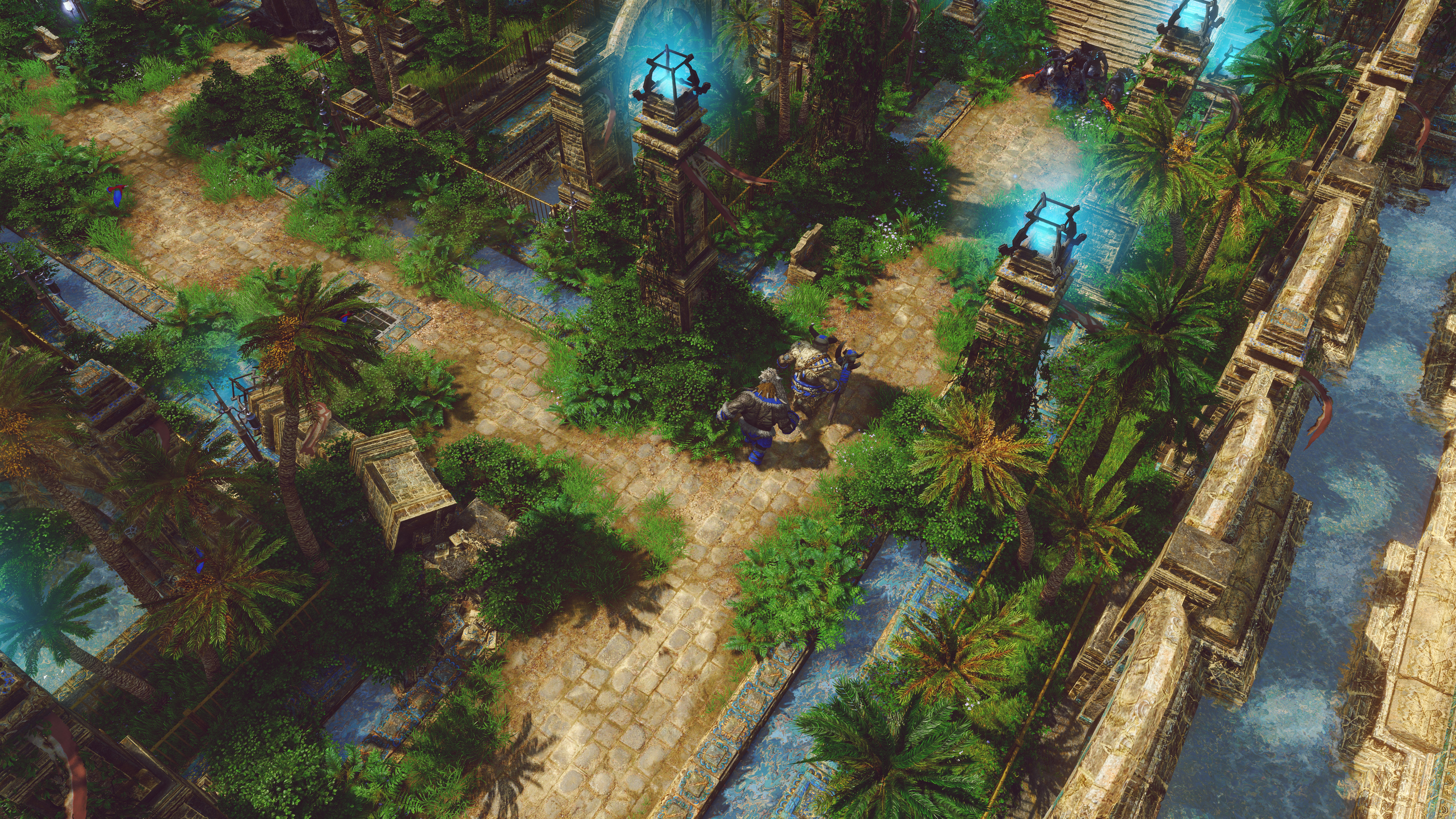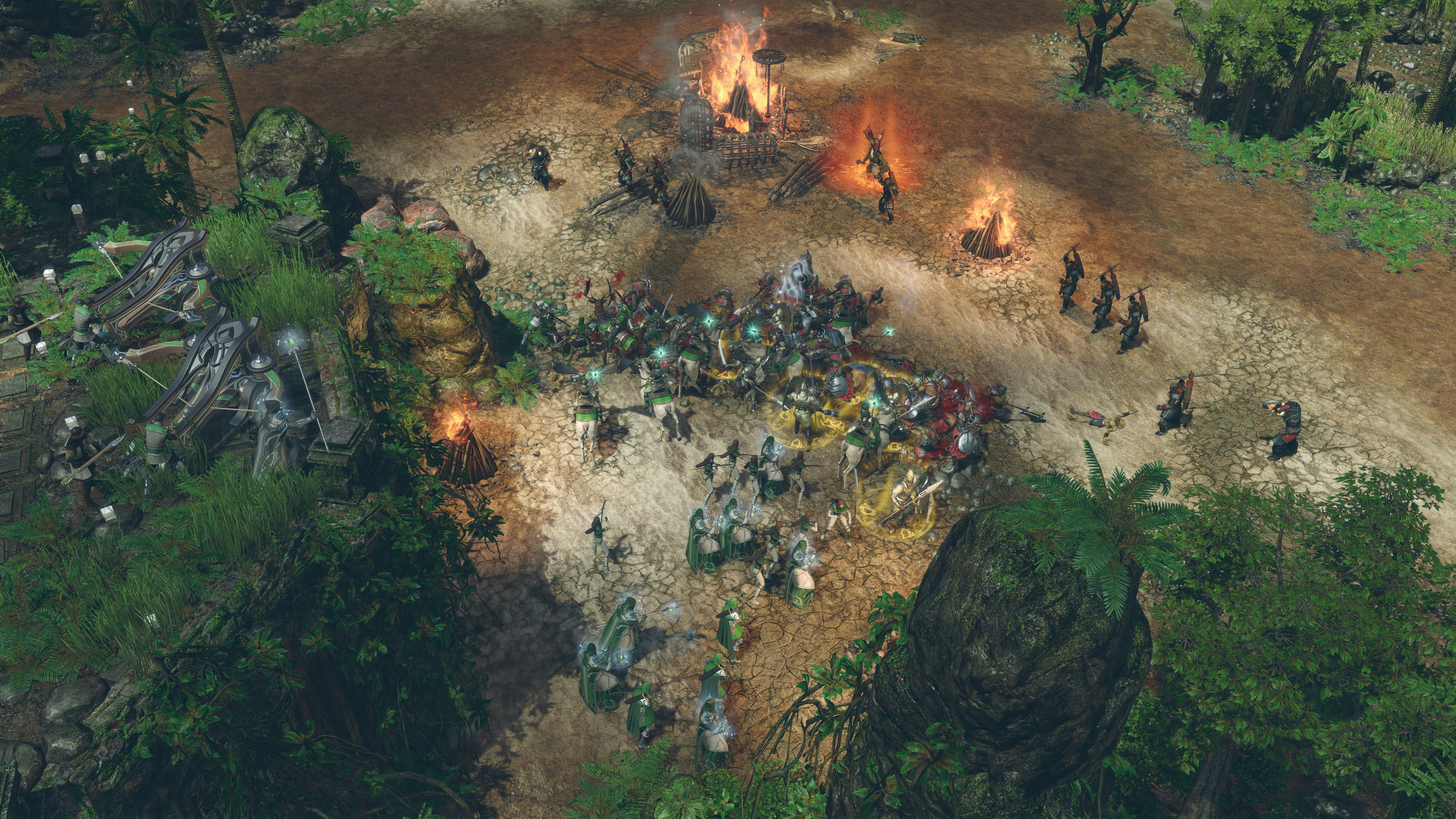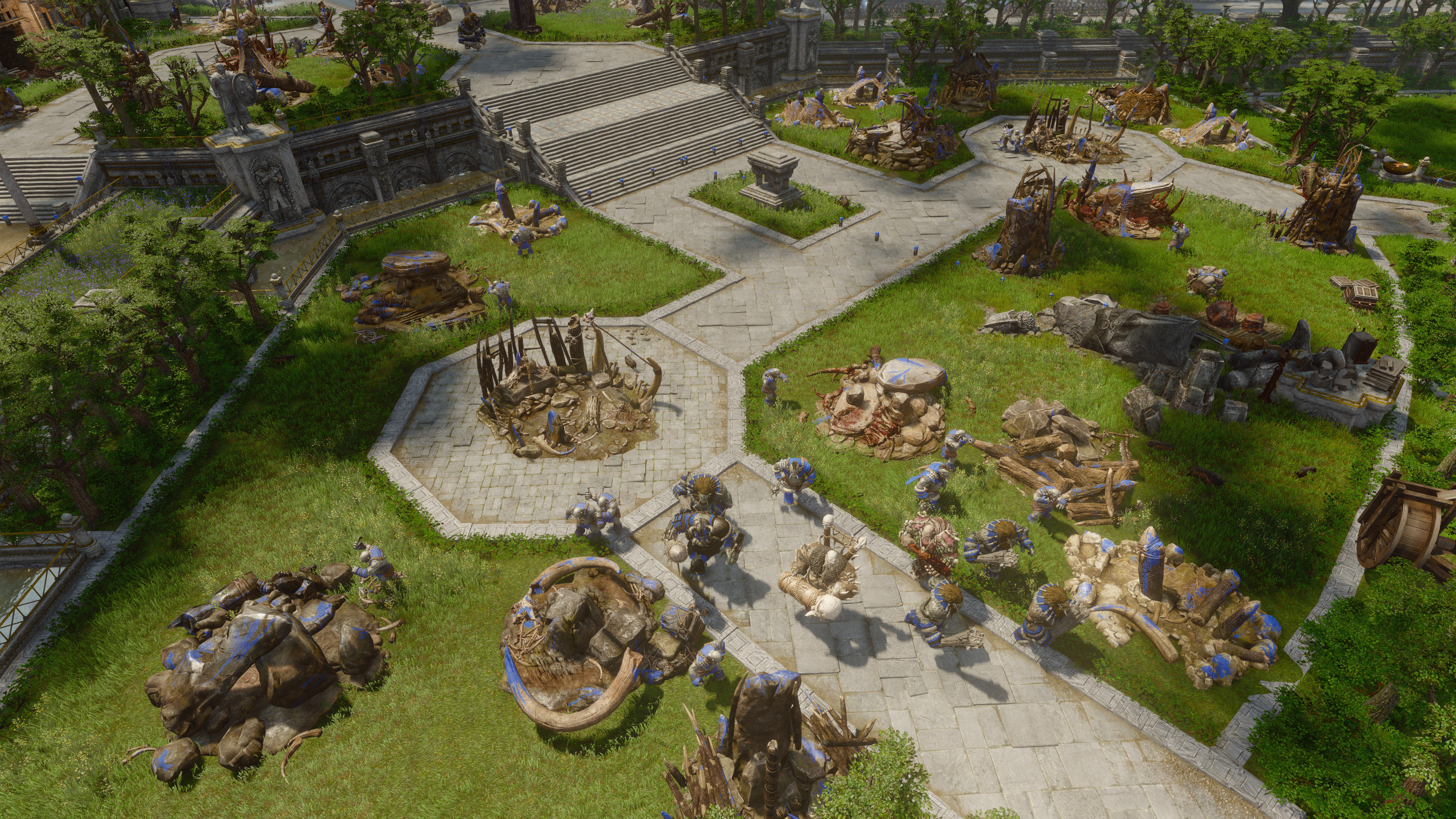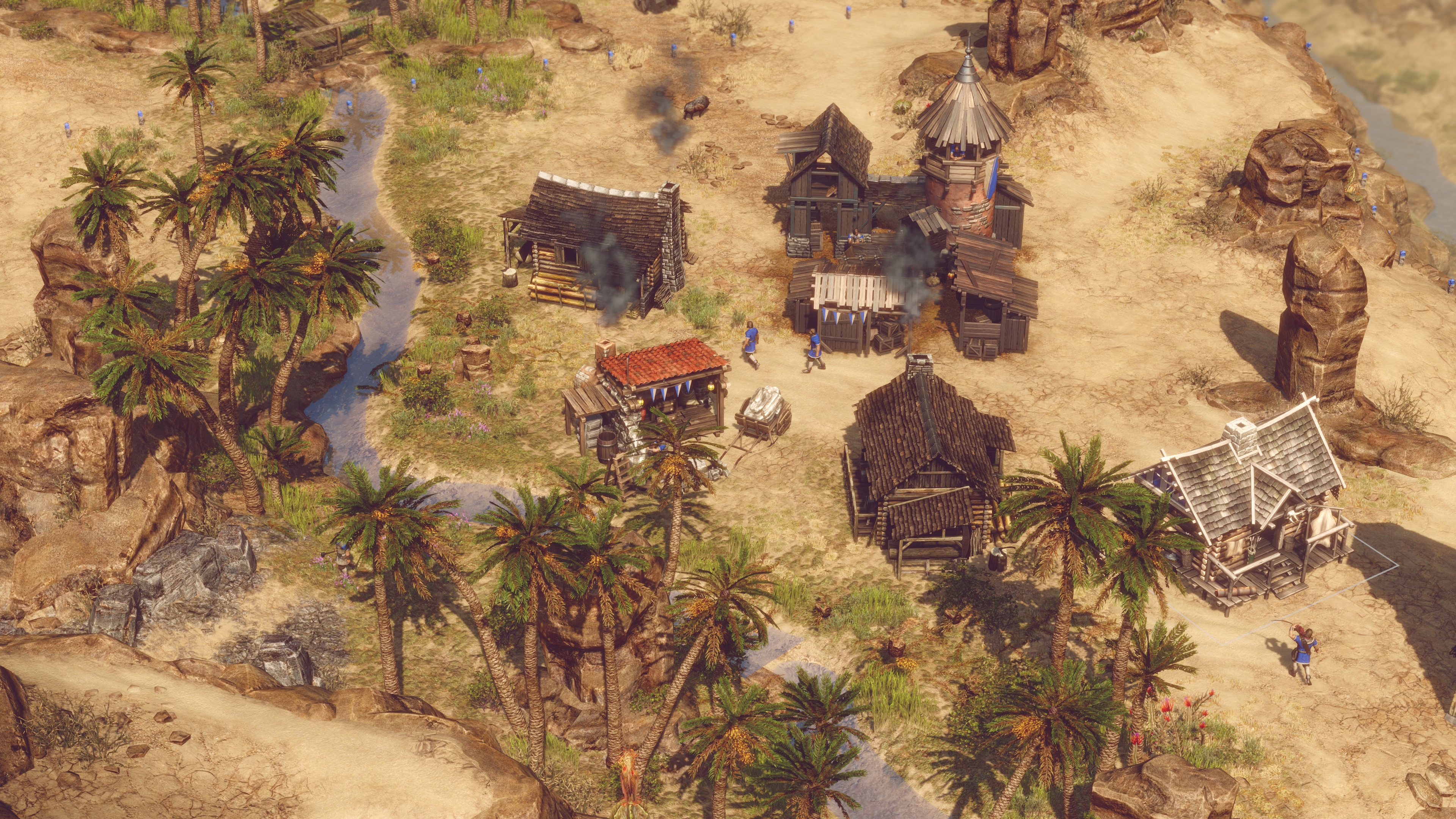SpellForce 3 is the perfect RPG/RTS hybrid
SpellForce 3 demonstrates that sometimes, a great concept is all a game really needs

Welcome! This column is part of a regular series in which we share what members of the Tom's Guide staff are playing and enjoying right now, with an eye towards helping you find great games that you may have missed. Be sure to check out our recent entry, where we talk about Divinity: Original Sin 2.
SpellForce 3 is a perfect illustration of how a good core concept is possibly the most important thing that a video game can bring to the table.
The SpellForce series has been around since 2003, and it’s survived for almost 20 years because, essentially, it’s the only game in town if you want to play a role-playing game and a real-time strategy game at the same time. The stories and characters aren’t particularly memorable; the gameplay isn’t particularly deep; the graphics and sound are nothing special. But here we are, three games and seven expansions deep, and I still can’t put SpellForce down.
Read next: Warlord: Britannia is the (almost) perfect blend of strategy and first person gaming.
For the past few weeks, I’ve been playing through SpellForce 3: Fallen God, which is the most recent — and probably last — expansion for SpellForce 3. According to Steam, I’ve been playing this series for 351 hours so far, and I’ll probably log another 5-to-10 hours before I’m done.
During the course of my playthrough, I’ve rolled my eyes at the endless streams of dialogue, gritted my teeth while mousing over every inch of the map for tedious collectibles and plowed through every mission with the exact same “overwhelming force” strategy. And yet, I’m going to miss the game once it’s done, simply because there’s nothing else quite like it.
A hybrid genre
My fling — “love affair” is probably too strong a term — with SpellForce started after I played Warcraft III back in high school. I adored Warcraft III’s hero characters, and how you could level up their stats and abilities over time. I especially loved how the upgrades persisted from mission to mission, giving the heroes a real sense of growth. I had to know if there was another game that fully combined the character growth of an RPG with the large-scale battles of an RTS.

I assumed there would be a wide range of choices. After all, RPGs and RTS games, in theory, appeal to a similar kind of gamer. You start off with almost nothing, and have to manage your resources wisely to slowly build yourself up. You develop your own strategies, and find the right units and/or equipment to complement them. Both RPGs and RTS games require a kind of “hurry up and wait” mentality, with bursts of frenetic activity occasionally interrupting periods of methodical consideration.
Get instant access to breaking news, the hottest reviews, great deals and helpful tips.
However, aside from Warcraft III, the pickings proved to be pretty slim. For whatever reason, few developers have ever attempted a true RPG/RTS hybrid. While grand strategy/RPGs are somewhat more common, SpellForce is the only long-running RPG/RTS series that I’m aware of — and even after 19 years, it’s pretty niche.
I adore how SpellForce 3 handles base-building and expansion.
The basic premise of any SpellForce game is that you create an avatar, customize your stats and skills, find new equipment, and manage a whole party of adventurers, just like any good RPG. But occasionally, you’ll come across a challenge that’s too big for your party to handle alone. Then, you’ll have to establish a base, forage for resources, research new technologies and build up an army, just like in StarCraft or Age of Empires.
The SpellForce series offers six different playable races: Humans, Elves, Dwarves, Orcs, Trolls and Dark Elves. They all feel sufficiently distinct and interesting to play.
The first game, SpellForce: The Order of Dawn, and its two expansions were pretty rough. Party members had no personalities; your character level could make battles either trivial or impossible; the buildup phase felt intolerably slow; there sometimes weren’t enough resources to complete missions if your first big attack went south.
SpellForce 3: Fallen God also does something I’ve almost never seen before in an RPG: it humanizes Trolls.
But the germ of a good game was there. It was genuinely satisfying to build up your character over time, customizing stats, learning new abilities and even making dialogue choices to affect the narrative. The RTS missions raised the stakes each time you embarked on one, giving the game a deceptively large, epic feel.
SpellForce 2 and 3, along with their expansions, built on this foundation, introducing better RPG mechanics, better-balanced races and significantly better pacing. While SpellForce 3 is still a little janky in spots, it’s as good as the series has ever been. With smooth, streamlined gameplay, and a few innovative ideas that better RTS games could actually benefit from including, it’s the best execution of the RPG/RTS hybrid concept that I've seen so far.
A few good ideas
While I thoroughly enjoy the SpellForce series, I don’t want to oversell it. It’s very much a “good” game rather than a “great” one, and I don’t think it’s going to change anyone’s mind about either the RPG or RTS genres. However, it does have a few creative ideas — and those ideas are what have kept me glued to the Fallen God expansion.
In terms of gameplay, I adore how SpellForce 3 handles base-building and expansion. In most RTS games, you can recruit resource-gatherers, construct buildings and establish bases anywhere you can find space. This gives you a lot of freedom, but can also encourage more timid players (like me) to turtle up and hide away in a single corner of the map for most of the game.

In SpellForce 3, by contrast, your main base can support only so many workers. If you want to gather resources, recruit soldiers and construct buildings and anything faster than a snail’s pace, you absolutely must take your heroes out exploring, fighting off foes and conquering territory as you go. It increases the pace of each mission, and forces you to defend a wide swath of territory rather than a single bottleneck.
SpellForce 3: Fallen God also does something I’ve almost never seen before in an RPG: it humanizes Trolls. In most Western RPGs, including previous SpellForce games, Trolls are usually big, dumb brutes who sometimes take orders from Orcs, and sometimes just make nonsensical remarks in broken English.
This time around, though, you play as Akrog: chieftain of a thoughtful, peaceful tribe of Trolls called the Moonkin. In Fallen God, the Trolls have their own culture, customs, belief and even style of speech. (They don’t use “I,” “you,” or “we” pronouns, which perhaps explains why they seemed hard to understand in the previous games.) Akrog and his people are not walking weapons; they’re victims of slavery, trophy hunting and pure indifference from the “brittlebone” races of Orcs, Elves and Humans. Seeing this world from their perspective is a fascinating experience.
Just as the Warcraft series humanized Orcs and made them into three-dimensional characters, rather than easy experience points for “prettier” heroes, Fallen God has made me care a whole lot about a group of scary-looking Trolls. I wish more games would follow suit.
SpellForce 3 — Reforced

It’s a fortuitous time to play SpellForce, as the series is just a few days away from making its console debut. SpellForce 3 — Reforced will be out on PS4, PS5, Xbox One and Xbox Series X/S on Tuesday (June 7), and it could introduce a whole new contingent of fans to this unusual series.
I’m personally a little skeptical about console ports of RTS games, as the control schemes never seem to work quite right. Still, SpellForce has always done things its own way, and usually had something interesting to show for its efforts. If enough people buy the game, perhaps we’ll see a SpellForce 4 — and perhaps other developers will realize that the RPG and RTS genres are ripe for another hybrid experiment.

Marshall Honorof was a senior editor for Tom's Guide, overseeing the site's coverage of gaming hardware and software. He comes from a science writing background, having studied paleomammalogy, biological anthropology, and the history of science and technology. After hours, you can find him practicing taekwondo or doing deep dives on classic sci-fi.
